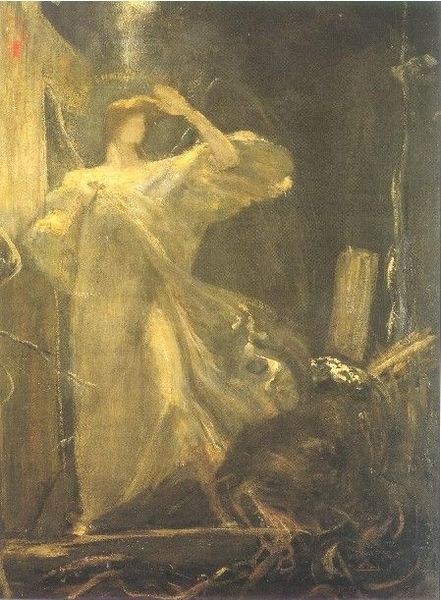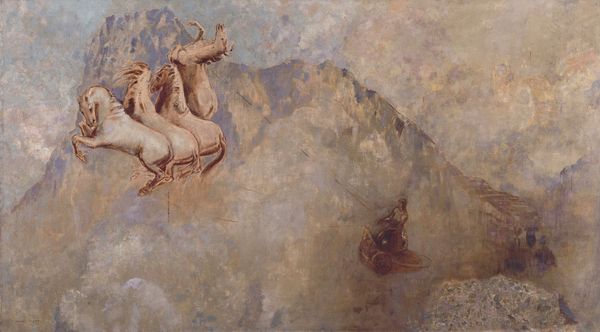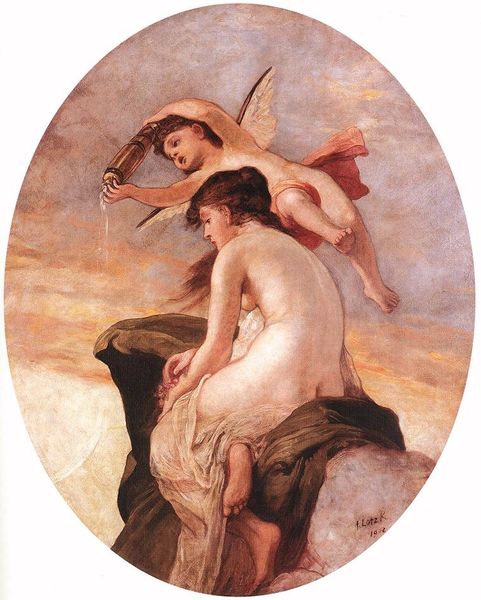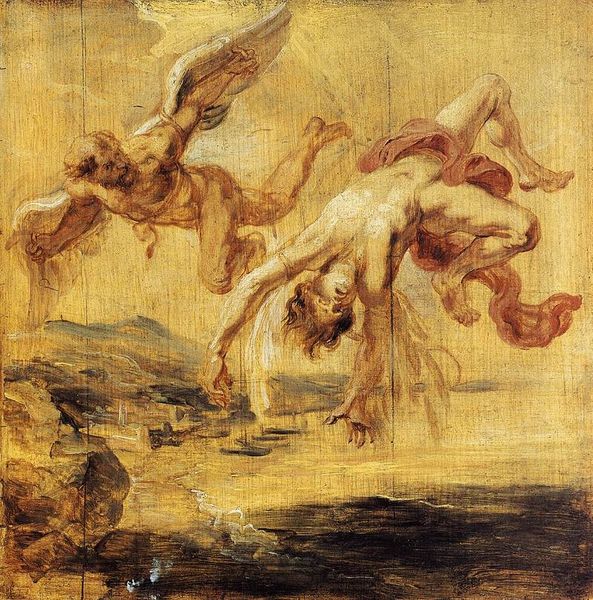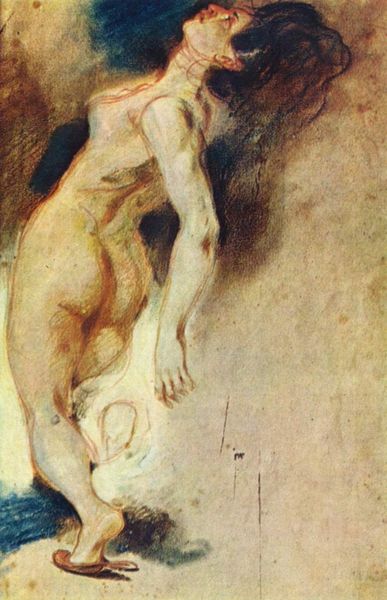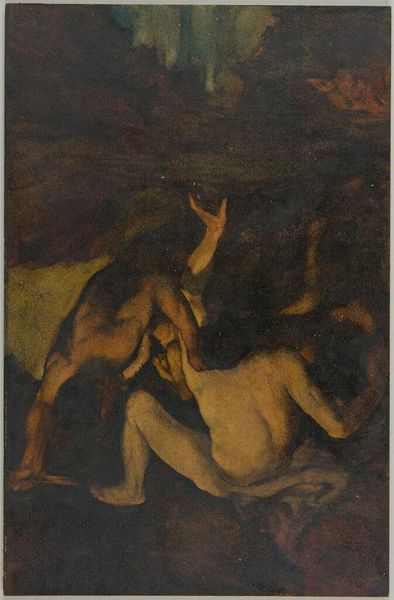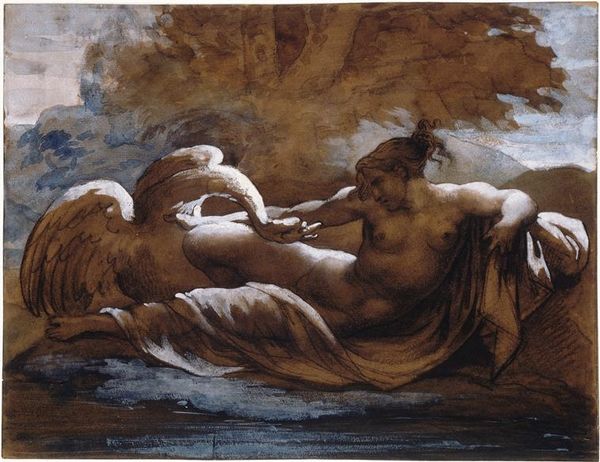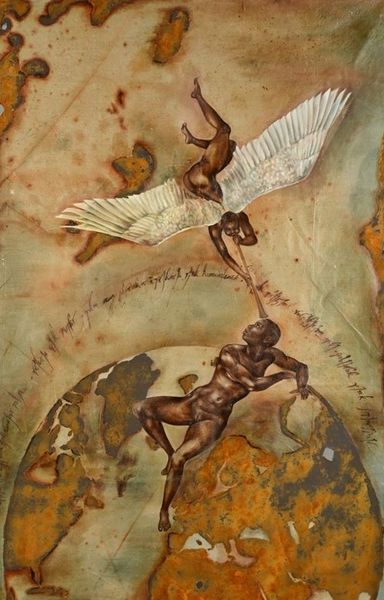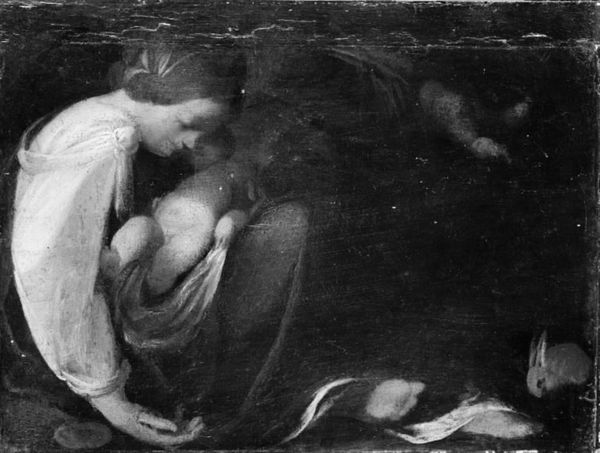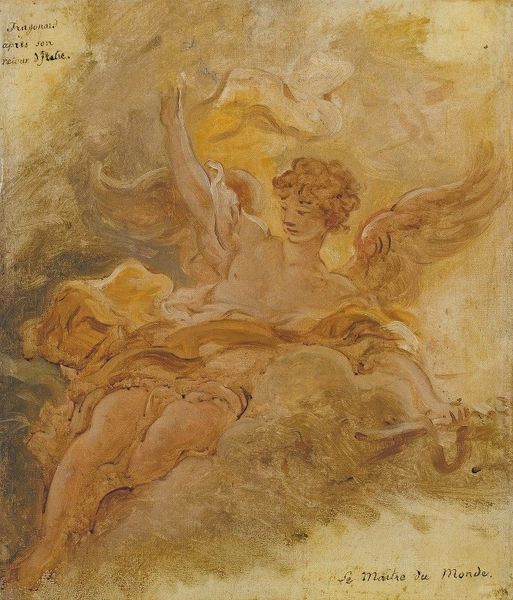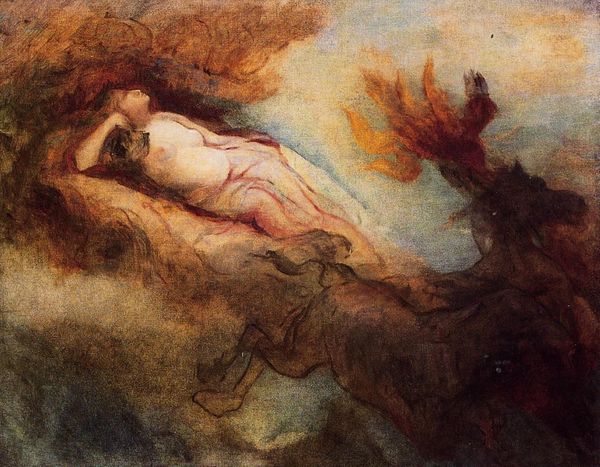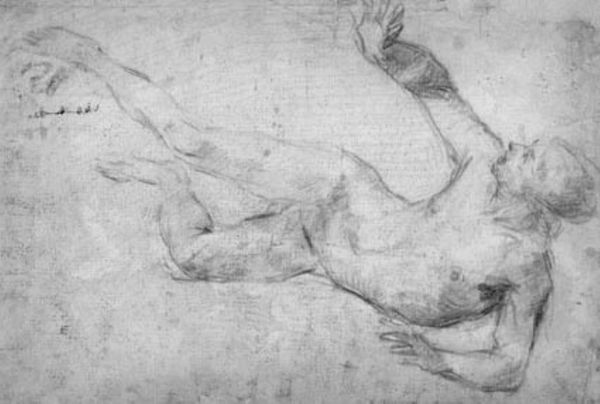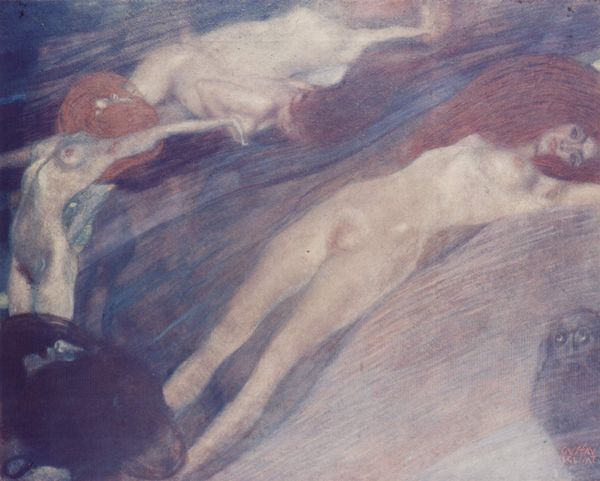
painting, oil-paint
#
allegory
#
painting
#
oil-paint
#
figuration
#
oil painting
#
romanticism
#
history-painting
#
nude
Copyright: Public domain
Editor: This is George Romney's oil painting "Ariel." The figure appears to be caught in mid-flight, surrounded by a swirling vortex of pigment. There's an almost overwhelming sense of dynamic movement. How do you interpret this work through a Formalist lens? Curator: Formally, the painting’s success hinges on its dramatic use of chiaroscuro and dynamic composition. Observe how the figure, almost entirely nude, is sculpted by light and shadow. Romney masterfully uses a limited palette of ochre and browns, enhancing the overall sense of drama. Editor: So the color palette and light are more important than, say, the subject matter? Curator: Precisely. The subject—who is indeed Ariel from Shakespeare’s *The Tempest*— serves as a vehicle for exploring formal relationships. The upward thrust of the figure, the swirling brushstrokes that create a sense of motion, and the dramatic lighting effects all contribute to the painting’s intrinsic power. Note also the gestural quality of the brushwork; it speaks to a particular artistic process, independent of narrative concerns. Editor: I see it now, it's as if the formal elements create the feeling of lightness and freedom associated with the character, even if you didn't know who it was supposed to be. Curator: Precisely. The aesthetic experience emerges directly from these visual properties. A thorough analysis demands close attention to these intrinsic elements. Editor: I will certainly view paintings with an enhanced focus on their formal elements going forward. Thank you for your insights. Curator: My pleasure. It is a path to profound engagement with the artwork itself.
Comments
No comments
Be the first to comment and join the conversation on the ultimate creative platform.
